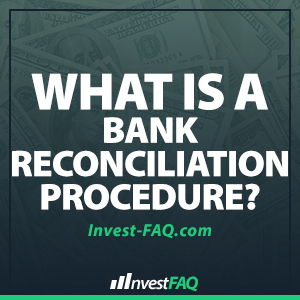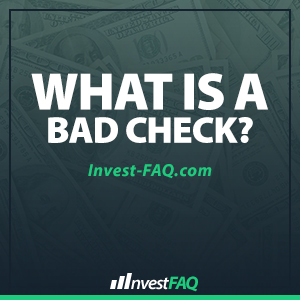Bank Reconciliation ProcedureContents A bank reconciliation procedure is a critical accounting process that involves comparing a company’s internal financial records against its bank statements to ensure accuracy and consistency between the two. This procedure helps identify discrepancies such as unrecorded transactions, errors in accounting records, or unauthorized bank charges, and it is essential for maintaining
What Is a Bad Debt Forecast?
Contents Bad Debt Forecast A bad debt forecast is an estimation of the amount of accounts receivable that a company does not expect to collect from its debtors. This financial projection is crucial for businesses to anticipate potential losses from uncollectible accounts, aiding in more accurate financial planning and risk management. In the realm of
What is a Bad Check?
Bad CheckContents A bad check, also known as a bounced check or NSF (non-sufficient funds) check, is a check that cannot be processed because the account on which it was drawn does not have enough funds to cover the amount of the check. This situation results in the check being returned to the depositor without
CPA Exam Cost & Fees
Becoming a CPA is one of the most rewarding experiences you can have in your accounting career. Not only do professionals of all industries respect certified public accountants, but also CPAs make on average $1M more throughout their careers as compared with non-certified accountants. Needless to say, pursuing a CPA certification is well worth it
Price to Book Ratio
The price to book ratio or P/B ratio is a metric that reflects how the market price reflects the current book value of the business shares. The Price to Book ratio measures the number of times the market price of the company’s shares exceeds the book value of the business. What is the Price to Book
Net Present Value (NPV)
Net Present Value (NPV) is a measure that estimates the expected profitability of a project based on its forecasted cash flow stream and the initial cost of such project. A positive Net Present Value (NPV) indicates that the project, considering the time value of money, covers the initial investment and can be therefore accepted by
Long Term Debt to Asset Ratio
The Long-Term Debt to Asset Ratio is a metric that tracks the portion of a company’s total assets that are financed through long term debt. This ratio allows analysts and investors to understand how leveraged a company is. What is the Long Term Debt to Assets Ratio?Contents Understanding the degree in which a company relies
Interest Coverage Ratio
The interest coverage ratio is a measure that indicates how many times the business’ Earnings before Interest and Expenses (EBIT) cover the company’s interest expenses. The Interest Coverage Ratio is a debt ratio, as it tracks the business’ capacity to fulfill the interest portion of its financial commitments. What is the Interest Coverage Ratio?Contents Lenders
Debt to Equity Ratio
The debt to equity ratio is a metric that tracks how leveraged a company is by estimating how many dollars of debt it has for each dollar of equity. The Debt to Equity Ratio is employed as a measure of how risky is the current financial structure, as a company with a high degree of
Current Ratio
The current ratio, sometimes called the quick ratio, is a liquidity ratio that measures a company’s coverage of its current liabilities by its current assets. It tracks the short-term solvency of the business by assessing the number of times the short-term assets, those that will be converted into cash in less than 12 months, cover










